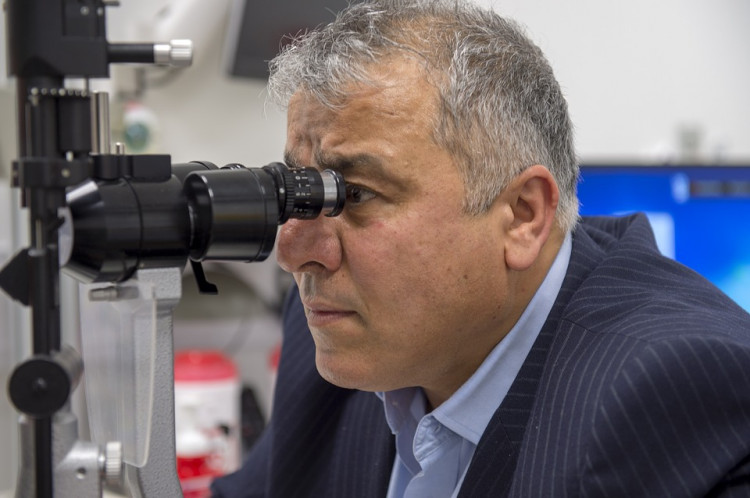A simple eye exam may help doctors in the future in detecting Alzheimer's disease, even without the presence of the symptoms. The study, which was published in the Journal of the American Medical Association (JAMA) Opthalmology, used equipment similar to that found at most eye doctors' offices and detected signs of Alzheimer's in a small sample of 30 people.
The participants in the study are all in the mid-70s with no outward symptoms of Alzheimer's. All of them underwent PET scans or sampling of spinal fluid, wherein half came back with elevated levels of the Alzheimer's proteins amyloid, or tau. This only suggests they may likely develop dementia.
Those who are in the group were found to have thinning in the retina, which has been previously seen by the experts in the autopsies of those who died due to Alzheimer's disease.
"In the patients with elevated levels of amyloid or tau, we detected significant thinning in the centre of the retina," said co-principal investigator Rajendra Apte, professor of ophthalmology and visual sciences at Washington University in St Louis, Missouri.
However, the study did not reveal whether these participants with thinning retinas went on to develop Alzheimer's or not. Because of that, Doug Brown, chief policy, and research Officer, Alzheimer's Society, noted that this particular study is "fascinating" but sounded a note of caution.
"Without confirming that any of the people with preclinical Alzheimer's actually went on to develop the disease, we would need to see this carried out on a much larger group over a longer period of time to draw any firm conclusions," said Brown, who was not involved in the study.
Sara Imarisio, head of research at Alzheimer's Research UK, agreed.
Experts believe brain damage caused by Alzheimer's disease can begin up to two decades before signs of memory loss appear. Approximately 50 million people are suffering from dementia worldwide, and it is expected to increase in the future are the population ages.
As per South China Morning Post, the most common form of dementia is Alzheimer's disease, and that this condition has no cure. But this current discovery could make it possible for drug or lifestyle interventions that may stave off the disease.
Doctors are using PET scans and lumbar punctures to help diagnose Alzheimer's. However, both procedures are expensive and invasive techniques. Meanwhile, the type of technology used in the study is called optical coherence tomography angiography (OCT-A). This procedure is commonly used to shine light into the eye to measure the thickness of the retina and optic nerve.
According to the researchers, the retina and central nervous system are interconnected. Hence, any changes in the brain can be reflected in the cells of the retina.
The authors of the study agree that more work is needed to confirm if the technique works in larger populations. But, they are hoping that this simple eye technique could help doctors screen people in their 40s and 50s.






